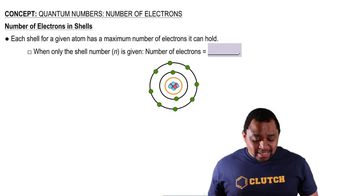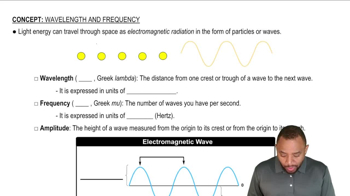Here are the essential concepts you must grasp in order to answer the question correctly.
X-ray Production
X-rays are produced when high-energy electrons collide with a metal target, causing inner-shell electrons to be ejected. When an outer-shell electron falls into the vacancy left by the ejected electron, energy is released in the form of X-rays. The specific transitions between electron shells determine the energy and wavelength of the emitted X-rays.
Recommended video:
Production of Hydrogen Example
Electron Shells and Transitions
Atoms have distinct energy levels or shells, denoted by principal quantum numbers (n). The Kα transition refers to the movement of an electron from the 2p orbital to the 1s orbital in copper, which releases a significant amount of energy, resulting in X-ray emission. In contrast, transitions like 4s to 3p involve less energy and do not produce X-rays effectively.
Recommended video:
Number of Electrons in Shells
Energy Levels and X-ray Wavelengths
The energy difference between electron shells determines the wavelength of the emitted X-rays. The Kα transition in copper has a larger energy difference compared to transitions from higher shells, leading to shorter wavelengths and higher energy X-rays. This is crucial for applications requiring penetrating power, such as medical imaging and material analysis.
Recommended video:




